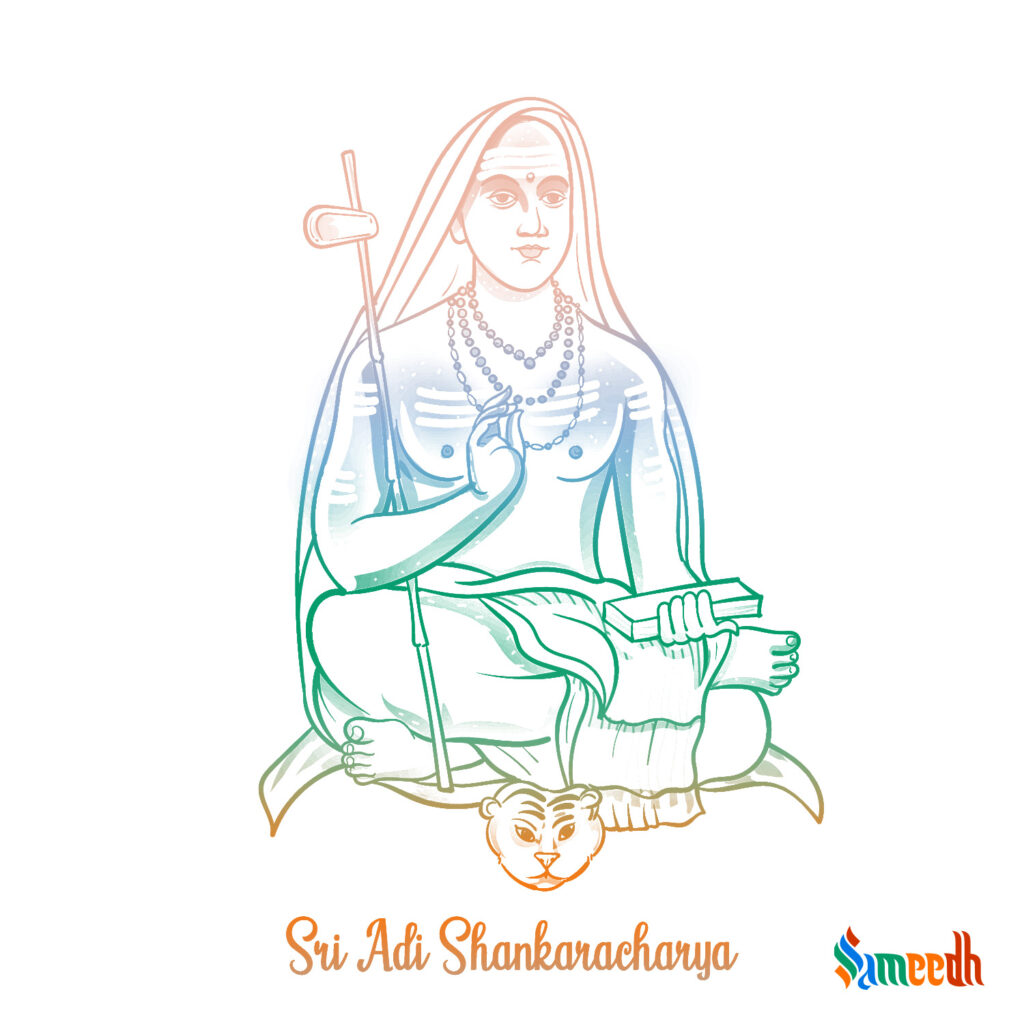Adi Shankaracharya started the renaissance of Hinduism in the Indian Subcontinent. He also achieved excellence in all the fields of knowledge and made it available to people through scriptures.

Who was Adi Shankaracharya?
Adi Shankaracharya is believed to be an avatar of Bhagwan Shiv. Adi means the oldest or the first – which indicates that he is the pioneer of a cult of Indian mystics, which carries forward the knowledge of Hinduism and Indian Civilization forward.
Historians have different opinions about the exact timeline of his existence, but many legends say it could be between the 7th to 9th century CE. Legends say he was the son of Sivaguru – his father and Aryamba – his mother, and the family belonged to Kerala state of India.
He achieved samadhi at the age of 32 after he had pioneered the renaissance of Hinduism in the Indian Subcontinent. The stories say that he had embarked on a journey for knowledge as young as 8 years of age. He then found his guru and achieved excellence in all the Vedic scriptures. He then went on to create numerous scriptures explaining his commentary on Upanishad, Bhagwad Geeta, and Brahmasutra. He also created devotional hymns, books on the Advait principle, and numerous other spiritual texts by the age of 16. Then he went on a mission to establish a new system for preserving ancient Indian scriptures and the values of Hinduism. . He was an Indian philosopher and theologian who is considered to be one of the most influential figures in the history of Hinduism. He was a key exponent of the Advaita Vedanta school of philosophy, which emphasizes the idea that the individual self and the ultimate reality, or Brahman, are one and the same.
The creation of 4 pan-India math
Adi Shankaracharya undertook long journeys across the Indian subcontinent, and he noticed the erosion of the values of dharma in the society. He also noticed the ignorance of scholars toward the priceless ancient Indian scriptures in society. This is why he embarked on a Tapasya to bring back the true glory of Hinduism and Indian Civilization.
Adi Shankaracharya established 4 centres of excellence (monasteries) in four directions of the subcontinent.
- The Shringeri Math – on the bank of the Tunga River in Karnataka State. This math is dedicated to the Yajurved, and its essence is Aham Brahmasmi.
- The Jyotir Math – near the Alaknanda river in Uttarakhand State. This math is dedicated to the Atharvaved, and its essence is Ayamatma Brahma.
- The Sarada Math – on the coast of the Arabian Sea in Gujarat State. This math is dedicated to the Samved, and its essence is Tattvamasi.
- The Govardhan Math – on the coast of the Bay of Bengal in Odisha State. This math is dedicated to the Rugved, and its essence is Prajnanam Brahma.
Not only that, he visited almost all the important temples with regard to Hinduism and established a system of chief priests, which ensured the cultural integration of India. He also established religious ritual processes and social rites.